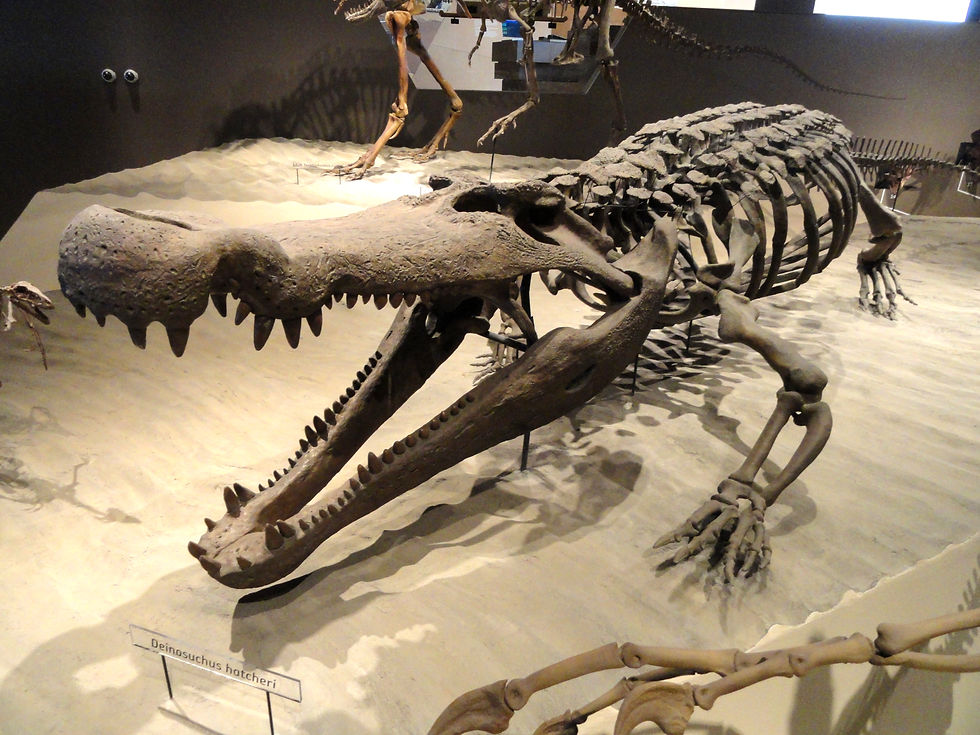Brunch, Lunch and Afternoon Tea Along The Jurassic Coast in Seaton, Beer and Branscombe
- Wayne Munday
- Mar 25, 2022
- 7 min read
Updated: Apr 21, 2022
This week the founders of Fossil Coast decided to enjoy the sunny Spring weather and take the opportunity for a small road trip along the Jurassic Coast soaking in the seascape of Seaton, Beer and Branscombe. The challenge for the day was to take our time and enjoy a brunch, lunch and afternoon tea at a different location as long as it had a picturesque sea view.

The 13,500Kg anchor of the MSC Napoli run aground on Branscombe Beach January 2007
Our mini road trip day starts in the historic town of Seaton a picturesque coastal Town located along the Jurassic Coast looking out onto Seaton Bay.
Seaton, Devon
Seaton is only gateway town of the Jurassic Coast whose cliffs show all three geological periods of the Triassic, Jurassic and Cretaceous. Seaton is also home to Seaton Tramway a narrow-gauge heritage tram running 3 miles through the countryside and two nature reserves between Seaton, Colyford, and Colyton.

Seaton has been inhabited since the Iron Age a period from about 800 BC to the Roman invasion of the British Isles in 43 AD.
The first recorded mention of the name "Seaton" was in a Papal Bull or public decree issued by Pope Eugenius III in 1146. Before that and according to the Saxon charter of 1005 the original name of the town was Fleet or Fleote (Fluta is a Saxon word for creek).
Seaton would go on to become a popular destination for holidays from the Victorian times and is credited in the 1930s as the location where both Harry Warner and Billy Butlin created the concept of a large-scale holiday camp.
Seaton has a flat esplanade where midway is built “The Waves Sculpture Discovery Point” directing you either onto the East Walk or West Walk. The walks hug over a mile of pebbly beach that shelves quite steeply into the sea at high tide.

“The Waves” (image right) commemorates Seaton’s contribution to Lyme Bays Special Area for Conservation (SAC) and its offshore reefs and sea caves. These habitats are home to many fragile and rare species including the Pink Sea Fan, Devon Cup Coral as well as dolphins, seals and sea horses.
To the east and rising beyond Axmouth Harbour and Axe Yacht Club is Haven Cliff with its impressive cretaceous cliffs and the Undercliffs National Nature Reserve. The South West Coastal Path can be seen to steadily climb its way past the Axe Cliff Golf Club uphill and onto towards Lyme Regis.
It was this view of Haven Cliff that J.M.W Turner RA one of Britain's greatest and most prolific painters sketched as a pencil drawing in his 1811 Corfe to Dartmouth Sketchbook. This artwork is now exhibited at the Tate and forms part of Turner's 1856 bequest to the Nation. Subsequently in 1839 there was the landslip creating the Undercliffs and Great Chasm now known as Goat Island.

A key feature to the east of the Town is the Axe River (image left) flowing from its inland wetlands into the intertidal estuary and harbour out across the River Ledge into the sea - apparently the neighbouring beach area is used by naturists.
Interestingly the unassuming River Axe was once the border that separated the Celtic Durotriges tribe (east of the river), and the Dumnonia tribe, who occupied land to the west, right down into Cornwall. The bridge crossing the River Axe has a small white building with a blue plaque that explains this was once a former toll house closed in 1907 and is now the oldest surviving concrete building in Britain.

Heading back along the West Walk towards Seaton Hole Beach over a mile away. The reward will be brunch sitting outside at The Hideaway Café.
Just as we start walking a familiar chopping sound in the air becomes audible as a military Puma Helicopter makes a low-level fly-by. For a few moments everyone stops and looks up to take in this impressive sight before it disappears following the contours over the White Cliffs heading eastwards.
About 15 minutes later, sitting at our table and waiting for our order to be called out we have the opportunity to take a good look along the western end of Seaton Beach and Seaton Hole and its White Cliffs.

The first thing that strikes you is that the rocks are in the wrong order. The cretaceous rocks appear to overlay the Triassic red sandstone and the Jurassic is missing. The fact is that a combination of earth movements over millions of years has meant that an unconformity has been created.
The red sandstone cliffs just before the chalk are part of the Triassic Mercia Mudstone and are not fossiliferous. These are mud and desert loess from the interior of a desert environment of about 250 million years ago. However the Cretaceous Upper Greensand is highly fossiliferous where fossil hunting can find ammonites, echinoids, brachiopods and bivalves though please observe all the safety measures around these cliffs.
Views of Seaton Hole Beach and the White Cliffs
On to Beer!
Beer, Devon

Only about 2 miles travelling along the scenic coastal road heading out of Seaton you will descend sharply into the picture-postcard village of Beer.
Driving into Beer you will pass decorative flint-studded thatched buildings as well as a number of independent shops cafes, and pub restaurants. This is a village we have visited many times and automatically head for the centrally located car park only a few minutes walk from the beach through the high street.

Beer is known for its rich maritime history and is surrounded by the chalk cliffs of the East and West Ebb, The Big Ledge and Beer Head. Within the local rock are caves that were once a haven for smugglers.
Among these notorious smugglers was Jack Rattenbury also known as the 'Rob Roy of the West'. He was infamous for smuggling contraband including French Brandy during the Napoleonic war. Beer is also the place where Queen Victoria’s wedding lace was made. Though the bridal dress was said to be Honiton lace records show that it was really worked in the village of Beer by Miss Jane Bidney and her team of 200 lace makers at a cost £1,000. It is believed that all the patterns and prickings have unfortunately been destroyed.

Views of West Ebb and the Big Ledge from The Jubilee Gardens in Beer, Devon
From Jubilee Gardens that mark Queen Victoria’s Diamond Jubilee jetty the footpath leads down to the jetty and onto the shingle beach lined with fishing boats and dinghy's. The traditional "Beer Lugger" may no longer sail these waters but local fishing boats are still launched and retrieved from the beach with large winch systems.
The beach has brightly coloured beach huts and busy seaside beach cafés interlinked with paths making it easy to move around. Outside of Beer heading to Branscombe is an interesting attraction called Beer Quarry Caves. This is an ancient quarry of man-made caverns dating back over 2,000 years. The local Beer Freestone is a Chalk Limestone laid down in the Cretaceous age (65 – 140 million years ago). According to the quarry, "There were high CO2 levels and no ice cap. 98% of chalk is composed from microscopic planktonic plant remains called coccoliths. At Beer there was a current flowing across the seafloor and this winnowed away the coccoliths leaving a fine shelly Limestone made from the well cemented calcite crystals derived from broken sea urchins, refined clay and sand. As water squeezed out increasing pressure led to the formation of pure white chalk by lithification. Freshly quarried Beer Stone is saturated with water and with very few fossils".
By mid-day the idea of eating lunch outside in the unshaded cliff-top beer garden seemed impossible as the sun was too intense. Instead we retreat to a bay window for lunch at the Anchor Inn a Greene King Inn still overlooking the bay for scampi, chips and mushy peas. According to Trip Advisor a Lovely pub with great grub! - We couldn't agree more but importantly adding that the staff were very helpful and welcoming.

The Anchor Inn in Beer, Devon
Next stop Branscombe for a good beach walk to work off lunch and an afternoon tea - though an ice cream may sneak into the diet today. It just so happens that neither of us have ever been to Branscombe.
Branscombe, Devon
When we think of Branscombe you cast your memory back to early 2007 and the beaching and shipwreck of a huge container ship called MSC Napoli during a Winter storm. What made this unusual or even memorable was that its large metal containers started to wash ashore and people from around the UK ascended on the beach to scavenge the cargo. I still remember the image of someone pushing a motorbike off the beach.
Branscombe ("combe" means a location or meeting point for two valleys or combes) is a picturesque coastal village located between Sidmouth and Seaton on the Jurassic Coast and within the East Devon Area of Outstanding Natural Beauty.
Driving from Beer to Branscombe you will pass some colourful cottages and decorative thatched buildings. However, you will also be navigated along some very narrow roads and although there are numerous passing points the conversation soon turns to how easily these roads would block up during a holiday season.
Once you pass through the village and head downhill to the Branscombe Beach you pass a fantastically shaped tree before you park up at Branscombe Mouth. The entrance to the beach area is bookended with the towering East and West Cliff. Branscombe Beach is immediately worth the drive and at low tide today it exposed a long stretch of flat sand for what seems a couple of miles and a swathe of warming shingle bordered by beach huts and chalets being readied for renting.

Its time for a leisurely stroll as well as a short nap on the warmed shingle before heading into the historically located Sea Shanty beach café.
Our research indicates that Hooken Cliff to the east at the edge of the landslide onto Hooken Beach to the East of Branscombe Mouth is an interesting fossil hunting location.
Most fossils are found in the fallen blocks of grey chalk and upper greensand. Loose echinoids can be found on the foreshore eroded from the chalk and brachiopods, oysters, bivalves, ammonites as well as sharks’ teeth, corals and sponges can be also be found.

It is also worth noting that walking back from East Cliff you will notice sitting high above West Cliff is a home with a spectacular sea views worthy of being a Bond style secluded getaway. I wonder if it can be rented?
Whilst in Branscombe consider taking the National Trust Historic Walk or visit the historic Forge, Old Bakery and Manor Mill. Branscombe has two historic pubs called, The Fountain Head and The Masons Arms serving homemade, locally sourced food and traditional ales including the ale from the Branscombe Brewery.
If you are looking to visit Branscombe during the Spring and Summer holiday's it maybe wise to consider renting a chalet or house nearby so you can easily walk to the beach.
Time for afternoon tea!

























